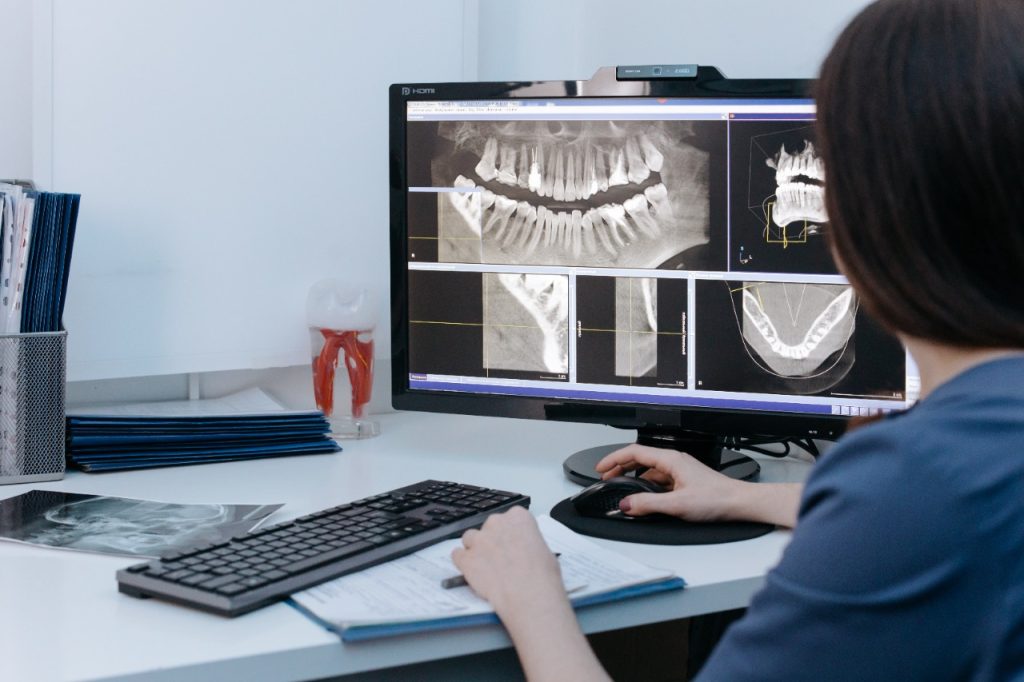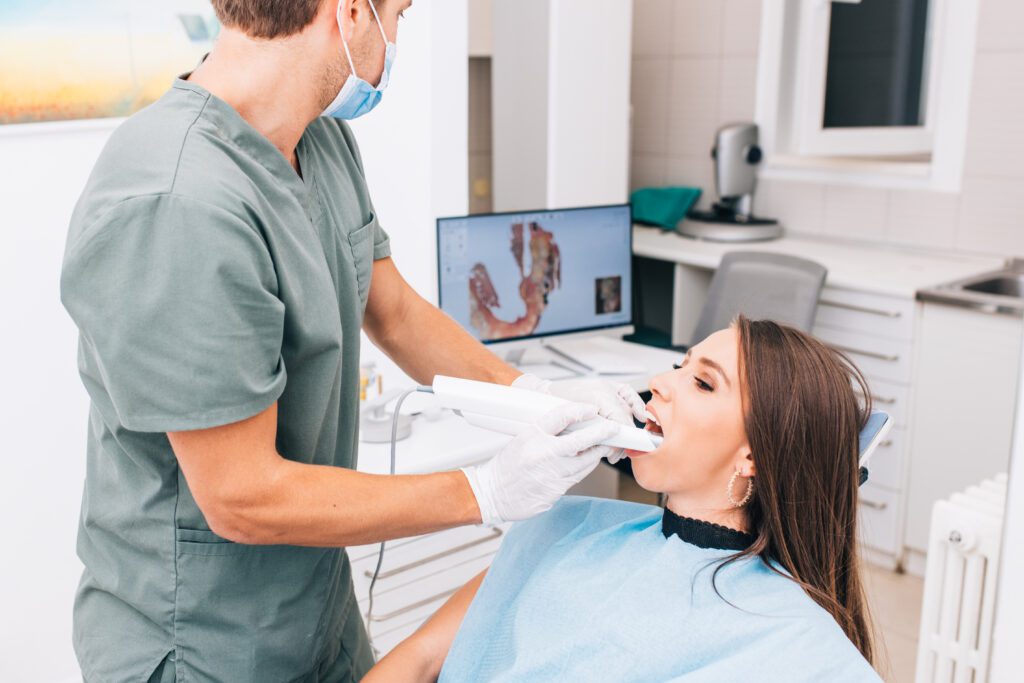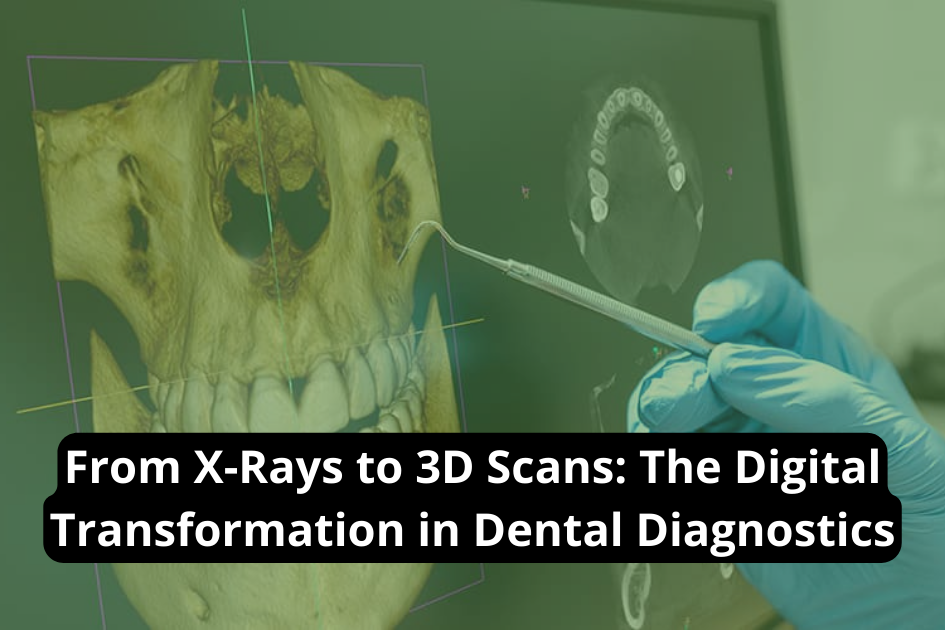Impressively, digital imaging technologies aid 80% of dental diagnoses in the present day. This narrative explores the shift from conventional X-rays to sophisticated 3D scans within the realm of dentistry, shedding light on the technological progress that has transformed diagnostic processes.
The dialogue emphasizes the main advantages and uses of these technologies while also contemplating possible advancements on the horizon in this fast-paced, evolving field. A spotlight is cast on the safety, effectiveness, and accuracy afforded by such digital transformation in dental diagnostics.
Understanding Digital X-Rays in Modern Dentistry
Within the realm of contemporary dentistry, digital x-rays have surfaced as a crucial instrument, delivering immediate and comprehensive visuals of teeth and jaw, thus transforming dental diagnostics. This advanced imaging technology presents crucial benefits compared to traditional radiography, such as diminished radiation exposure for patients and superior image clarity for clinicians.
Cedar Park Premier Dentistry in Cedar Park, TX utilizes this state-of-the-art diagnostic tool to effectively evaluate oral health conditions. The high-resolution visuals crafted by digital x-rays enable thorough scrutiny of individual teeth structures and nearby tissues, promoting early detection and management of dental problems.
The incorporation of this advanced technology symbolizes the dedication of Cedar Park Premier Dentistry to delivering top-notch dental care using advanced tools in the industry.
The Technological Leap: From Traditional to Digital Imaging
The technological jump from traditional to digital imaging has profoundly reshaped the contemporary dentistry landscape, yielding more accurate and comprehensive insights into oral health. This metamorphosis has empowered practitioners to identify conditions with unparalleled clarity and accuracy, thus enhancing treatment results.
Digital imaging technologies, including Cone Beam Computed Tomography (CBCT) and 3D scanning, have superseded their analog forerunners, offering intricate views of the oral cavity that were previously unattainable. These breakthroughs have contributed to better detection of dental caries, periodontal disease, and other oral pathologies at earlier stages. They also simplify preoperative planning for intricate procedures such as implant placement or root canal therapy.

Hence, this transition towards digitalization in dentistry highlights its potential to boost patient care through precise diagnostics and effective treatments.
Key Benefits of Using Digital X-Rays in Dental Practices
The use of advanced imaging techniques provides a multitude of benefits in dental care, particularly the immediate and detailed viewing of teeth and surrounding structures, leading to faster diagnosis and treatment planning. Digital x-rays are an excellent illustration of these progressions.
1. Increased Efficiency: The time taken to produce images through digital x-ray systems is minimal, thereby decreasing the patient’s exposure to radiation.
2. Enhanced Precision: High-resolution images offered by these systems assist in accurate diagnosis.
3. Convenient Storage and Access: The ease of electronic archiving allows quick access to past records for reference or comparison purposes.
4. Eco-Friendly: The digital process removes the requirement for chemical processing, which is a common feature of traditional films.
Thus, the incorporation of digital x-rays in dental practices marks a notable advancement in utilizing technology for superior oral healthcare delivery.
Applications and Uses of Digital X-Rays in Dentistry
The applications and uses of cutting-edge imaging techniques in dental healthcare encompass the discovery of concealed dental structures, malignant or benign masses, bone loss, and cavities. Digital X-rays provide a comprehensive view of these with limited exposure to radiation. This technology is instrumental in accurate diagnosis, enabling effective treatment planning. It also plays a significant role in monitoring ongoing treatments and assessing their success rates.
In the field of periodontics, digital radiography proves beneficial in detecting gum diseases by unveiling bone levels and anomalies. Endodontic procedures receive substantial benefits from this technology as it assists in determining root canal morphology and detecting periapical lesions.
Beyond that, digital X-ray images are an essential tool for orthodontic evaluations as they offer detailed views of craniofacial structures.
Safety and Efficiency: The Dual Advantage of Digital Imaging
Safety and efficiency surface as the dual benefits of contemporary imaging technology, offering a more precise diagnosis while diminishing patient exposure to radiation. These developments have transformed dental diagnostics and treatment procedures.

1. Accuracy: Digital imaging provides superior resolution compared to traditional radiographs, allowing for exact identification of oral issues.
2. Speed: Images are created instantly, significantly cutting down procedure time.
3. Safety: The digital approach reduces radiation exposure by up to 90%, prioritizing patient safety.
4. Eco-friendly: Digital X-rays remove the need for chemical processing needed for film X-rays, promoting environmental sustainability.
These technological leaps improve diagnostic capabilities and offer a safer, quicker, and environmentally conscious substitute to conventional methods.
The adoption of these technologies is vital for delivering top-tier dental care in the contemporary era.
The Future of Dental Technology: What’s Next After Digital X-Rays?
Within the sphere of oral healthcare, technological progressions continue to unfold, leading to conjecture about possible innovations that might succeed digital imaging. It seems reasonable to expect advances such as teledentistry, artificial intelligence (AI) applications and 3D bioprinting.
Teledentistry could allow for distant access to dental care and consultations, considerably improving accessibility. Concurrently, AI might serve for predictive analytics in diagnosing oral diseases or conditions with exceptional accuracy and efficiency.
Conclusion
The swift progression in dental technology, reminiscent of a phoenix rising from the ashes of obsolete methods, has radically transformed diagnostics and treatments. Digital X-rays epitomize this shift distinctly by offering enhanced safety, efficiency, and precision.
The future invites with further advancements that pledge to improve patient comfort and make dental procedures even more efficient. Hence, the digital evolution of dentistry is not only continuing but also possesses remarkable potential for expansion and refinement.


